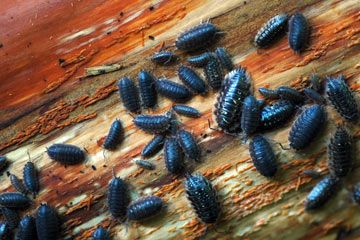One morning, you're vacuuming the hardwood floors and accidently bump into the baseboard in your living room. Instead of feeling a strong resistance, the attachment goes through the soft wood! After examination, you discover evidence of a termite infestation. What's next? How extensive is the damage? And how expensive will it be to repair?
Unfortunately, since it can take three to eight years of infestation for signs of termite damage to become evident, the little creatures can cause a lot of problems to the wood inside and outside your home before they're discovered.
Advertisement
Subterranean termites cause more than $1 billion in damage to homes in the United States each year [source: Suiter]. A homeowner's expenses to repair major damage can run into tens of thousands of dollars, and repairs are usually not covered by insurance. Signs that a house is infested with termites include the sudden appearance of winged termites emerging from a structure, termite-infested wood, or the presence of termite shelter tubes on wood surfaces. You might have a problem if you poke the suspected wood with a screwdriver and the tip goes in easily, or hear a hollow sound when you tap it with the handle.
Termites aren't the only insects that can cause damage. Carpenter ants look for damp and decayed wood to drill tunnels, and can cause significant structural damage. Carpenter bees drill round entry holes into wood found on eaves, decks and siding, then create tunnels for their colonies once inside. Powderpost beetles are another damaging insect; depending on their species, they may attack softwood used for floor joists, wall studs, and other structural lumber or hardwood used for cabinets, furniture, floors, and interior trim and moldings [source: Houselogic].
How do you approach repairing the wood damage to your home? The first step is to have an expert inspect your house to determine the extent of the damage. If the damage is minimal, it might make sense to simply treat for termites or other pests.The goal is to eliminate them from the wood before they cause greater damage, and repaint to cover any visual damage. Be sure to get rid of any moisture problems that might cause the wood to continue to deteriorate.
If the damage is not too extensive, you might be able to restore structural strength to the wood using an epoxy treatment. Epoxy mixes up like cookie dough, can be molded into shape while it's damp, and then carved and trimmed like wood when it is dry. Once painted, the epoxy-patched wood looks good as new [source: The Family Handyman]. This substance is extremely durable and impervious to insects, and is a good solution for repairs on window sills, door jambs, molding, or exterior columns that are difficult to remove and expensive to replace. In some areas of your home, you may be able to replace and repair the damaged wood using an epoxy filler to close the gaps. An experienced do-it-yourselfer could tackle either approach, or call in a carpenter for a professional touch.
If the insect damage is more extreme and the wood framing and foundation is impacted, it's time to call in a structural expert who will be able to recommend how to proceed with repairing the damage.
Advertisement


